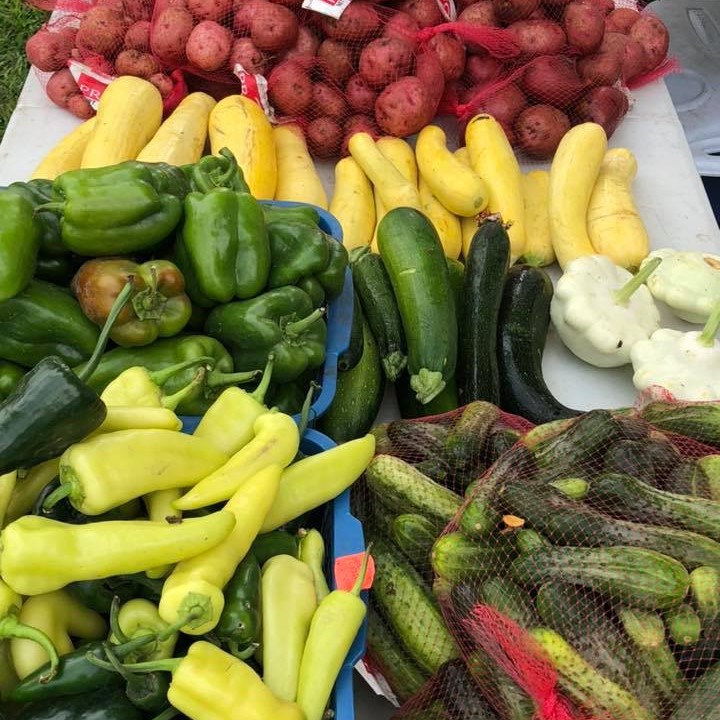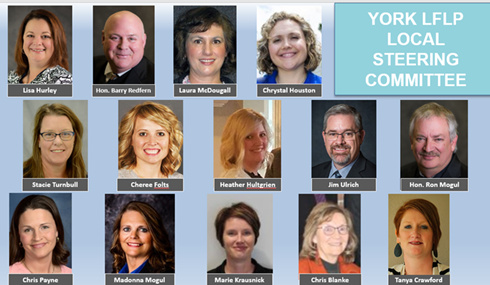Local Foods, Local Places
Project Purpose
Local Foods, Local Places helps cities and towns across the country protect the environment and human health by engaging with local partners to reinvest in existing neighborhoods as they develop local food systems. In 2020, the program is sponsored by the U.S. Environmental Protection Agency, U.S. Department of Agriculture, and the Northern Border Regional Commission. This technical assistance program is designed to help communities nationwide who are looking to capitalize on the growing demand for local foods to:
- Boost economic opportunities for local farmers and businesses, and foster entrepreneurship.
- Improve access to healthy, local food, particularly among disadvantaged groups with limited access to fresh fruits and vegetables.
- Revitalize downtowns, main street districts, and traditional neighborhoods by supporting farmers markets, food hubs, community gardens, community kitchens, and other kinds of local food enterprises, and by providing people with safe, easy ways to reach those amenities, such as walking, biking, or taking transit.

York Area Local Foods Local Places Plan
York County Food Access Survey
YORK Goals Summary:
- Goal 1 – Improve coordination among local food system vendors, growers, food distribution organizations, and buyers in York County.
- Action 1.1 – Research other food policy councils regionally and how they initiated the process to form their group.
- Action 1.2 – Reach out to farmers market vendors, producers and growers about forming a committee (volunteers).
- Action 1.3 – Develop a plan to build a partnership of current food suppliers to establish and maintain support for an indoor, year-round farmers market where community members can bring their food/garden produce, like a consignment store.
- Goal 2 – Develop innovative plan for old and current farmers market sitesand nearby spaces to incorporate into a downtown master plan that fully utilizes local food system development to advance downtown as a neighborhood, downtown revitalization, improved walkability and bikeability, and community character as identified in the York Comprehensive Plan.
- Action 2.1 – Research entertainment, speakers and other options to enhance vibrancy and customer appeal at future farmer’s markets. Determine related physical site lay-out needs.
- Action 2.2 – Utilize Four Corners Health Department walkability grant to identify areas of pedestrian improvements including connecting to multiple modes transportation, and start making corrections.
- Goal 3 – Improve access “for” and “to” local fresh produce at downtown farmer's market, in local schools and elsewhere through improved technology and other food system enhancements that fulfill untapped community demand, and improve reliability of local food supply through greater local grower and farmer participation.
- Action 3.1 – Research feasibility of implementing Supplimental Nutrition Assistance Program (SNAP) at the farmers market and determine implementation costs, steps, and vendor interest.
- Action 3.2 – Create farmers market survey for: 1) vendors; and 2) community members to understand barriers and incentives for attending the market.
- Action 3.3 – Establishes “Producer/Business Spotlight” at farmers market.
- Goal 4 – Expand community engagement and marketing to mobilize greater support for local food system development, community gardens, town revitalization, and interest in healthy lifestyle opportunities and community amenities such as at the York Ballpark Complex.
- Action 4.1 – Research market feasibility of Commercial Kitchen/Food Hub/Convenience store in remodeled Auditorium or other location.
- Action 4.2 – Identify locations for additional community gardens and provide support.
- Action 4.3 – Increase advertising/ of local food/local farmers/ markets using various marketing platforms.

Local Foods, Local Places technical assistance involved a 1.5-day Zoom workshop to bring together federal and state agencies with local stakeholders to identify strategies for enhancing their communities through local foods. Each workshop will result in an action plan laying out specific steps the community can take to achieve its goals. These workshops will make the connections between local food systems, place-based considerations, and community and economic development goals.
The Technical Assistance Process
The diagram in Figure 3 illustrates the phases of technical assistance: planning, convening, and action. The planning phase lasts about eight to ten weeks and involves selecting a local steering committee to guide the project and participate in planning meetings to clarify goals and arrange workshop logistics. The convening phase includes a 1.5-day workshop where the community gathers with a technical assistance team including federal and state partners to develop a set of goals and an action plan. During the action phase, the technical assistance team works closely with the steering committee to prepare the action plan. This phase takes about eight to ten weeks and involves convening the steering committee and other stakeholders to review the plan and develop a strategy to maintain momentum during implementation.

For more information: https://www.epa.gov/smartgrowth/local-foods-local-places








